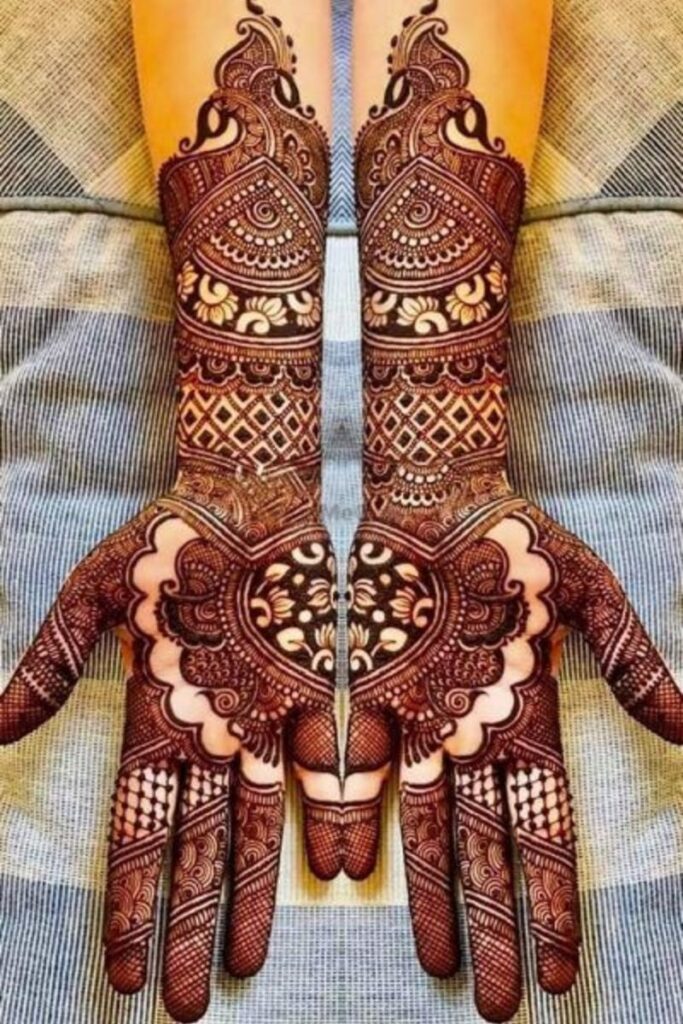A Beautiful Tradition of Art and Culture

Indian Mehndi Design is one of the most popular and detailed styles of henna art in the world. From weddings to festivals, Indian mehndi has become a symbol of beauty, celebration, and tradition. This intricate art form is not just about decoration—it tells a story through every curve and pattern.
History and Significance
Mehndi (henna) has been used in India for centuries, with its origins dating back over 5,000 years. It was initially applied for cooling the body during hot weather, but over time, it became an essential part of celebrations. Whether it’s Karwa Chauth, Diwali, Teej, or Indian weddings, mehndi plays a central role in enhancing the beauty of women.
In Indian weddings, mehndi holds emotional and spiritual value. It is believed that the darker the bride’s mehndi color, the deeper her love and bond with her husband. There’s even a saying, “Mehndi Rachaayi, Suhagan Ban Jaayi” meaning “Adorn the mehndi, and you’ll be blessed with a long, happy married life.”
Key Features of Indian Mehndi Designs
Indian mehndi designs are known for their fine detailing, cultural motifs, and full-hand coverage. Some common elements include:
Peacocks – a symbol of beauty and grace
Paisleys – classic curves seen in almost every design
Flowers and leaves – representing nature and femininity
Mandala patterns – circular, symmetrical designs often on palms
Bride and Groom figures – popular in bridal mehndi
Checkered patterns and mesh (jaali) – to fill gaps beautifully
These designs usually cover the front and back of hands, arms, and even feet. Indian bridal mehndi can take 3 to 6 hours to apply because of its elaborate detail.

Modern Touch to Indian Mehndi
While traditional Indian mehndi is full and detailed, modern brides often prefer a mix of minimalist and traditional styles. Fusion designs with Arabic patterns, tattoo-style elements, or personal symbols (like initials, love stories, or wedding dates) are now trending.
You can now see finger mehndi designs, stylish back hand designs, and even geometric shapes inspired by contemporary aesthetics.
When to Apply Indian Mehndi
Indian mehndi is mainly used for:
Weddings (especially for brides and close family members)
Eid, Diwali, Raksha Bandhan, Teej, Karwa Chauth
Engagements and baby showers (godh bharai)
Traditional dance or cultural events
Tips for Darker Mehndi Stain
Leave mehndi on for at least 6–8 hours
Avoid washing hands with water after removing mehndi; rub with mustard oil instead
Apply lemon-sugar mix to moisten and darken the stain
Avoid using soaps for 24 hours after application
Conclusion
Indian Mehndi Design is not just body art—it’s an expression of joy, culture, and tradition. With its rich patterns and deep meanings, it continues to evolve while holding onto its cultural roots. Whether you’re a bride-to-be or a mehndi lover, Indian designs offer endless beauty and charm for every occasion.